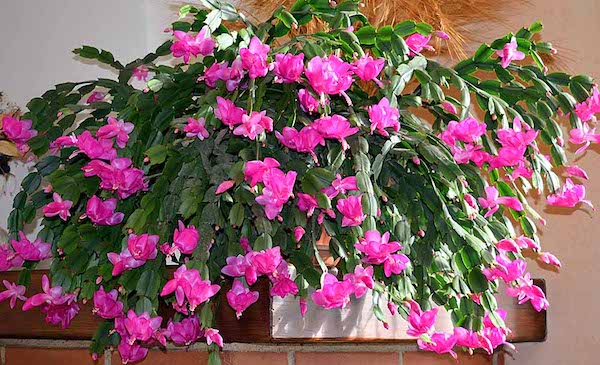by Bruce Bennett • If you have been a gardener for more than a few years, you’ve probably been pegged by those around you as a gardening authority and someone who is all about plants. If that’s the case, gifting a plant makes perfect sense.
Plants are one of those presents that will keep on providing happy thoughts for years to come. They can also help stave off seasonal depression, improve air quality in their environment, and enhance room decor. The fact that they are also readily available for last-minute shopping and can be very budget-friendly only helps to make your decision the easier. What are the best plants for you to give as gifts?
Knowing your recipient is the most important part of choosing a houseplant as a gift. A water-sipping succulent might be most appropriate for a busy on-the-go type of friend, while a shade-tolerant fern could fit better in a shady apartment with an observant owner. If the potential recipient is already a plant-lover, consider an unusual choice that may test their skills. In any case, including a ceramic pot and a bag of the appropriate potting mix can be an excellent addition to the plant gift you decide to pull together.
If you don’t already have the answers to the questions below, do a bit of research first to make sure that it’s the right type of plant to give:
- What are the light levels in your friend’s home where plants might be placed?
- Is your friend allergic to flowers? If so, giving succulents or other foliage plants as a gift will be better than flowering plants.
- Does your friend have a pet? If so, make sure the plant you are gifting isn’t poisonous to the type of pet they have.
- Does your friend hate or love a certain color? This answer can determine the flower color of the plant you give — or if that plant has flowers at all.
Generally speaking, there are three gift-able types of indoor plants that make excellent holiday gifts: traditional, easy care, and extra-special.
TRADITIONAL
The first thought is probably the ever-popular red-leaved poinsettia (Euphorbia pulcherrima). Restrain yourself from giving this one. Not only is it too ubiquitous and obvious a gift, it is also a short-timer in the horticultural scheme of things. It is possible recolor the plant for the next holiday season, but there are the months of plant sequestration in a dark room which may prove challenging.
Instead, consider something hardier, like the Christmas cactus (Schlumbergera bridgesii) or one of its cousins, the Thanksgiving cactus and Easter cactus, with their pink, white, and orange flowers which bloom for more than a month, require minimum maintenance, and do well in full sun to part-shade.
Bulbs are another way to go. You can easily wrap unsprouted bulbs or give ones that have emerged from dormancy and has green leaves growing. Amaryllis (Amaryllis belladonna) and the ever-fragrant paper whites (Narcissus papyraceus) are the holiday poster children for bulbs. You could also include hyacinths, grape hyacinths and daffodils in this mix of possibilities. The recipient of your gift would do well to keep the plant in a well-lit area, and when the blooms drop later in the winter, cut the flower stalk, and keep the leaves until those die back for the season. With proper care, bulbs can happily survive to enhance several holiday seasons.
Another of the traditional plants is every Italian cook’s favorite aromatic herb, rosemary (Rosemarinus officinalis). Often trimmed into the shape of a mini-Christmas tree, they make excellent, multi-purpose hostess gifts. They can remain an indoor potted herb to be snipped as needed for a meal, or can be planted in the yard this coming spring where they will grow much larger and have small light blue flowers. No matter whether indoors or out, they need as much sunlight as possible.
EASY CARE
For bright-light areas, the spider plant (Chlorophytum comosum) is an old favorite. It can be kept as a bushy, pot-sized plant or left to grow. Its hanging branches will produce youngsters upon youngsters down to four feet long.
Smaller sun lovers could include succulents, colorful bromeliads and the extremely low-maintenance air plants (Tillandsia), which can grow nicely in suspended glass balls. For a typical shady room, take a look at the upright snake plant (Dracaena trifasciata) and iron plant (Aspidistra elatior), as well as the ever-popular hanging/climbing Philodendron.
EXTRA SPECIAL
This category can include reasonably easy-growing plants such as the Norfolk Island pine (Araucaria heterophylla), bonsai (various species), moth orchid (Phalaenopsis), and the flamingo flower (Anthurium andraeanum). In the wilds of the South Pacific, the Norfolk Island pine can reach some 200’ tall; in the average living room, that height will max-out at around 6’ (just right for a layered living Christmas tree in its own right).
The moth orchid is arguably, one of the easiest orchids to grow. The Anthurium has bright red, green, and white colored flowers that can constantly bloom for long periods, making them an excellent indoor color spot year-round. The blooms are distinctive heart-shaped waxy red spathes with yellow tail-like flower spikes.
Holiday plants aren’t a one-size-fits-all gift. Get your green-thumbed friend something that really suits his or her fancy. Remember, both the friend and you could be looking at that holiday gift for many years to come. Happy Holidays to you and yours and happy gardening all year long!
Bruce Bennett is a WSU Master Gardener, garden designer, consultant and lecturer. Send your gardening questions and suggestions for future column topics to him at gardenguy4u@gmail.com. Photo from gardeningsoul.com.


